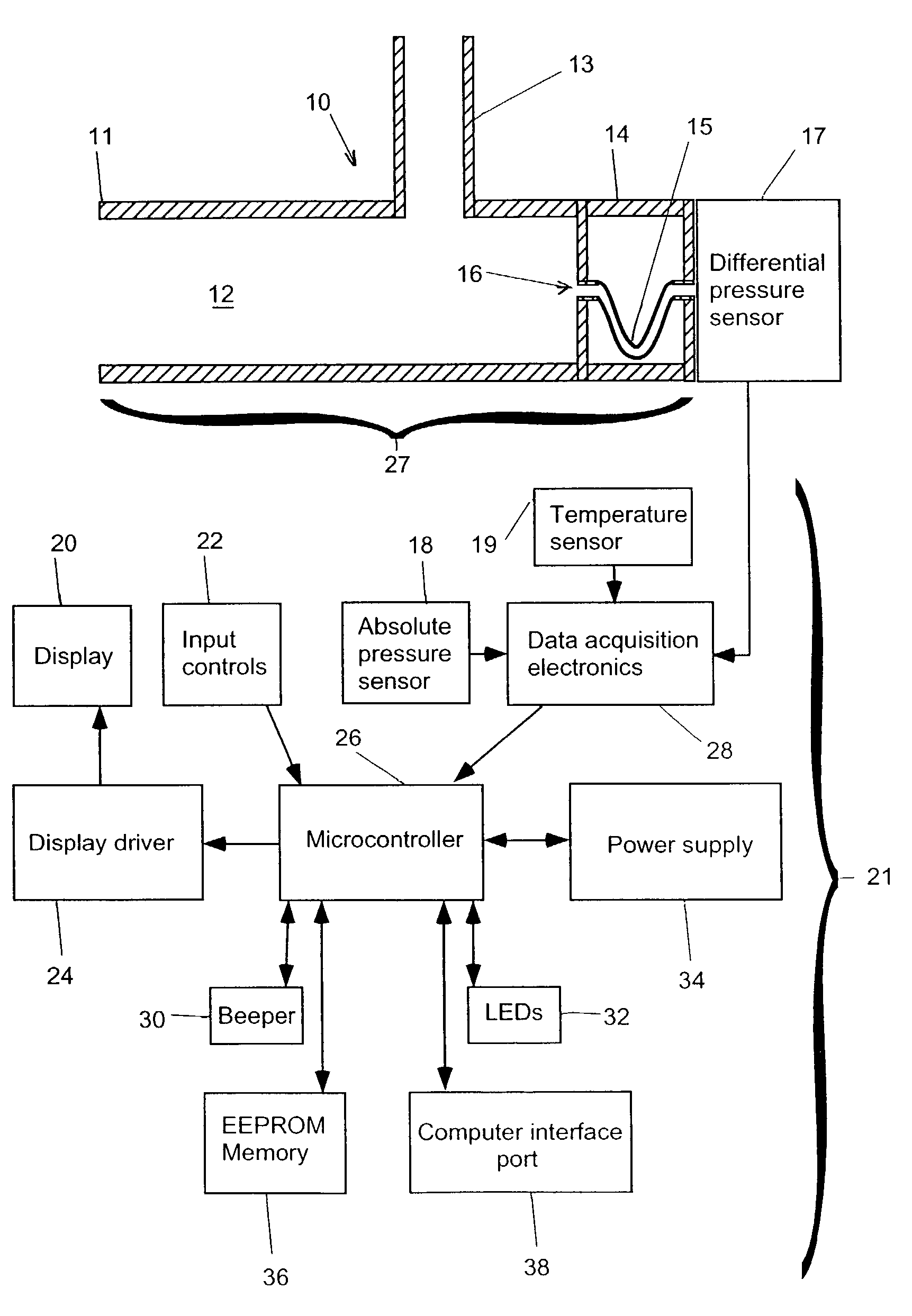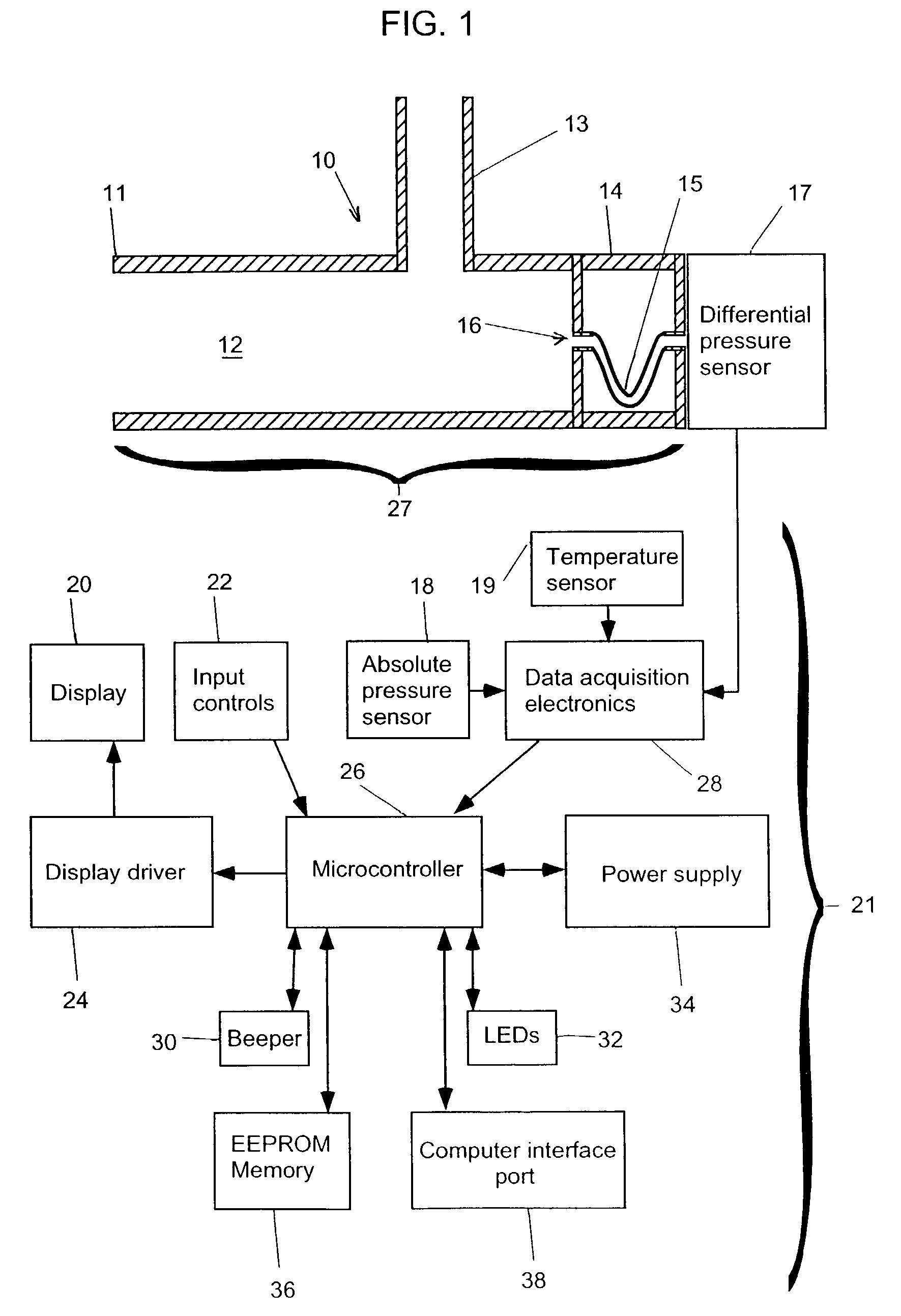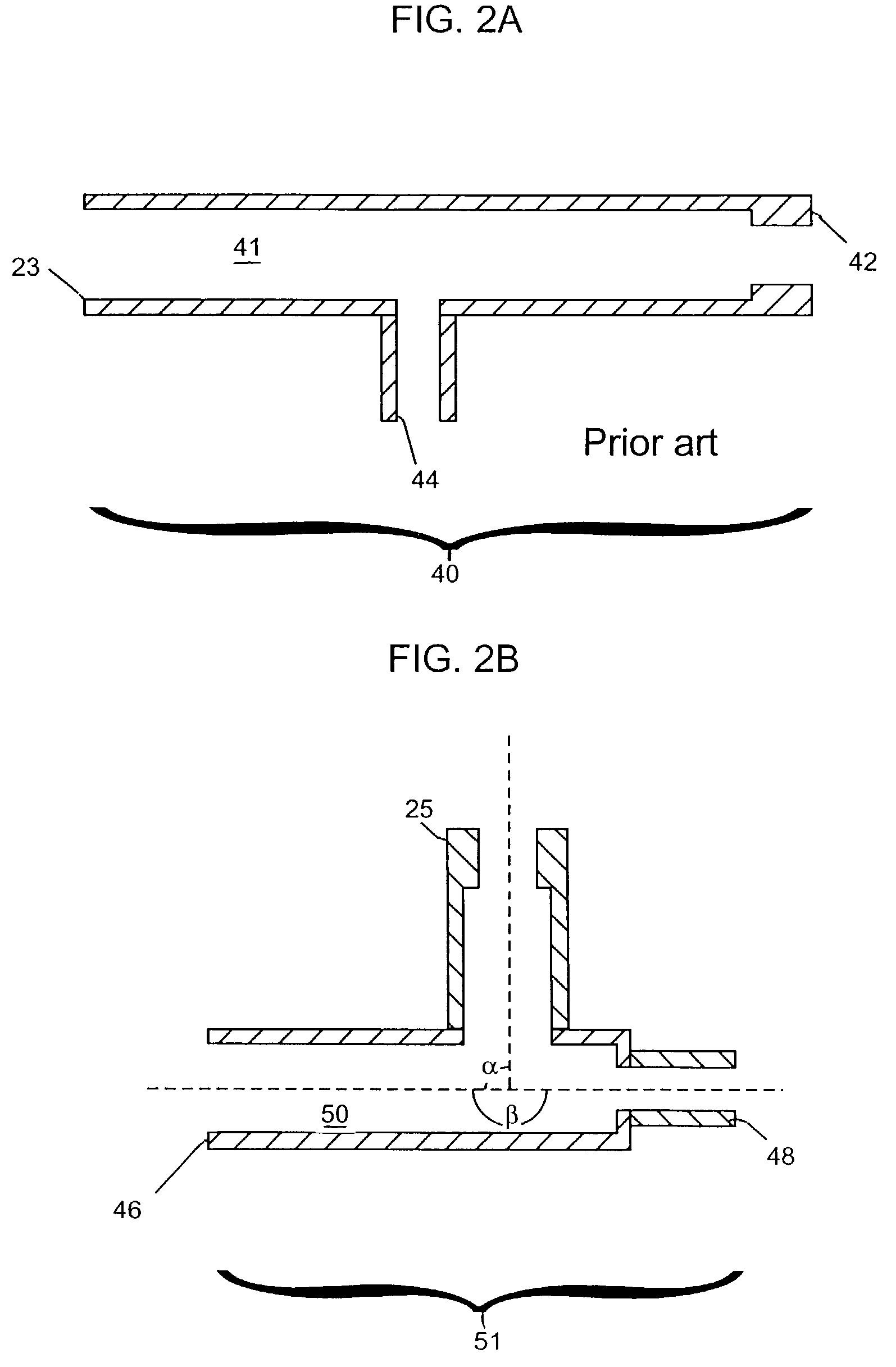Portable electronic spirometer
a spirometer and electronic technology, applied in the field of portable spirometers, can solve the problems of preventing a highly accurate or complete determination of flow properties, low level of accuracy of spirometers, and no electronic recording and transmission means of spirometers, etc., to achieve the effect of increasing the measured air pressur
- Summary
- Abstract
- Description
- Claims
- Application Information
AI Technical Summary
Benefits of technology
Problems solved by technology
Method used
Image
Examples
Embodiment Construction
Spirometer Construction
[0030]Referring to FIG. 1, the spirometer 10 consists of a housing 27 having a flow chamber 12, with a mouthpiece 11 and a meander passageway structure 61. The meander passageway structure 61 consists of a housing compartment 14 having end walls 63 and 65 at opposite ends and a hollow meander tube 15 whose meander passageway 16 is bent and opens through end walls 63 and 65 to provide fluid communication between the flow chamber 12 and a differential pressure sensor 17. The meander tube 15 could be replaced by, for example, a block of material with a bore therethrough. A differential pressure sensor 17 is located at an end of the flow chamber 12 opposite the mouthpiece 11. The meander tube 15 is used to protect the pressure sensor 17 from the direct flow of air so that contaminants from a user's breath will not enter the pressure sensor 17. An outlet tube 13 intersects the flow chamber 12 transversely. The meander tube 15 and crosshatched area may be constructe...
PUM
 Login to View More
Login to View More Abstract
Description
Claims
Application Information
 Login to View More
Login to View More - R&D
- Intellectual Property
- Life Sciences
- Materials
- Tech Scout
- Unparalleled Data Quality
- Higher Quality Content
- 60% Fewer Hallucinations
Browse by: Latest US Patents, China's latest patents, Technical Efficacy Thesaurus, Application Domain, Technology Topic, Popular Technical Reports.
© 2025 PatSnap. All rights reserved.Legal|Privacy policy|Modern Slavery Act Transparency Statement|Sitemap|About US| Contact US: help@patsnap.com



